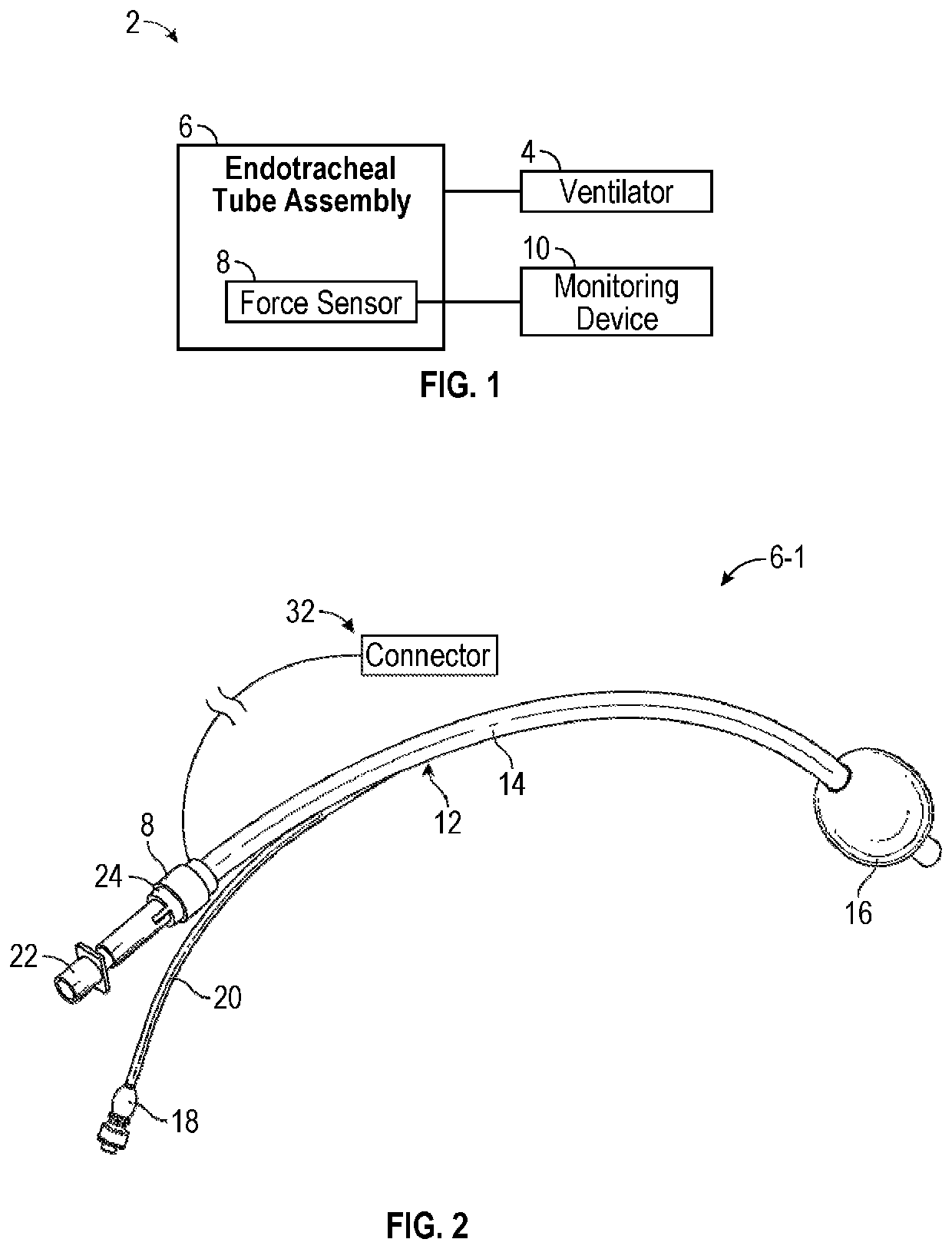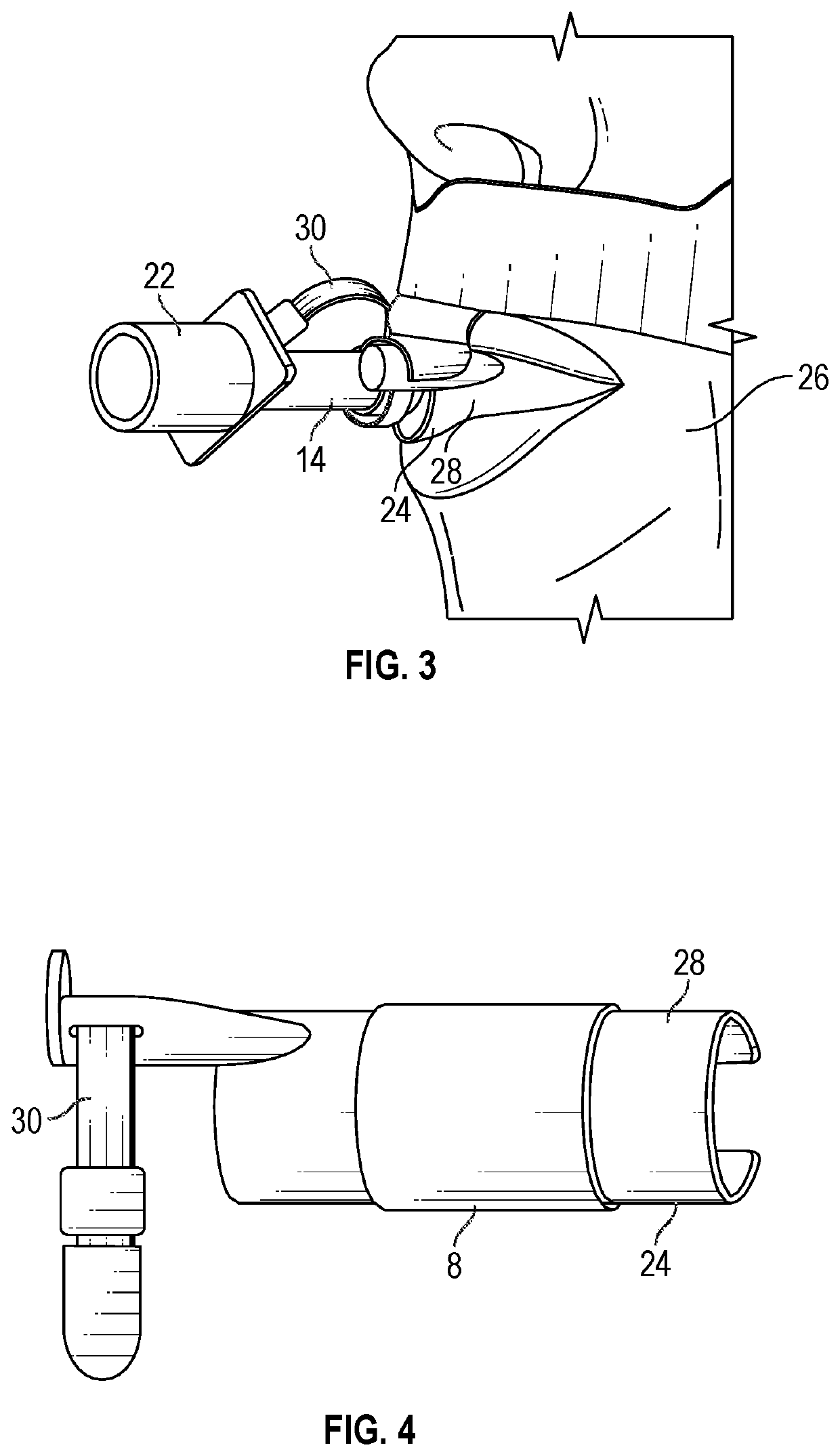System and method for detecting agitation, discomfort and/or self-extubation during intubation
a technology of intubation and self-extubation, applied in adaptive control, instruments, applications, etc., can solve the problems of agitation, discomfort, or pain in patients, affecting the assessment of agitation, discomfort, or pain during intubation, and the difficulty of critical mechanical ventilation
- Summary
- Abstract
- Description
- Claims
- Application Information
AI Technical Summary
Benefits of technology
Problems solved by technology
Method used
Image
Examples
Embodiment Construction
[0022]As used herein, the singular form of “a”, “an”, and “the” include plural references unless the context clearly dictates otherwise.
[0023]As used herein, the statement that two or more parts or components are “coupled” shall mean that the parts are joined or operate together either directly or indirectly, i.e., through one or more intermediate parts or components, so long as a link occurs.
[0024]As used herein, the term “number” shall mean one or an integer greater than one (i.e., a plurality).
[0025]As used herein, the term “controller” shall mean a number of programmable analog and / or digital devices (including an associated memory part or portion) that can store, retrieve, execute and process data (e.g., software routines and / or information used by such routines), including, without limitation, a field programmable gate array (FPGA), a complex programmable logic device (CPLD), a programmable system on a chip (PSOC), an application specific integrated circuit (ASIC), a microproc...
PUM
 Login to View More
Login to View More Abstract
Description
Claims
Application Information
 Login to View More
Login to View More - R&D
- Intellectual Property
- Life Sciences
- Materials
- Tech Scout
- Unparalleled Data Quality
- Higher Quality Content
- 60% Fewer Hallucinations
Browse by: Latest US Patents, China's latest patents, Technical Efficacy Thesaurus, Application Domain, Technology Topic, Popular Technical Reports.
© 2025 PatSnap. All rights reserved.Legal|Privacy policy|Modern Slavery Act Transparency Statement|Sitemap|About US| Contact US: help@patsnap.com



